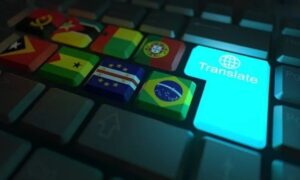In the vast realm of language and translation, two intriguing counterparts emerge, each with its unique challenges and purposes: the Braille Translator and the Bad English Translator. While one seeks to empower individuals with visual impairments, the other playfully distorts language for creative effect. Let’s explore the diverse landscapes they navigate and the impact they have on communication and accessibility.
Braille Translator: Bridging the Gap for the Visually Impaired
At the heart of inclusivity lies the Braille Translator, a tool dedicated to making written content accessible to individuals with visual impairments. Through meticulous conversion, Braille Translators transform text into raised dots, allowing individuals to read through touch. This vital process not only grants independence but also opens doors to education, literature, and information for millions worldwide.
Braille Translator serves as champions of accessibility, ensuring that visually impaired individuals can engage with written material in various forms, from books and educational resources to everyday signage. By breaking down barriers, Braille Translators empower individuals to navigate the world of information with confidence and autonomy. You can use any online Braille translation tool for translation
Bad English Translator: Embracing the Art of Linguistic Distortion
On the other end of the spectrum lies the Bad English Translator, a playful provocateur in the world of language. Rather than facilitating understanding, the Bad English Translator intentionally distorts syntax, grammar, and vocabulary, resulting in humorous or nonsensical renditions of text.
While seemingly frivolous, Bad Translator serves as a creative exploration of linguistic boundaries and conventions. Through its deliberate mangling of language, the Bad English Translator challenges our preconceptions and invites us to view language from a new perspective. In this way, it celebrates the inherent flexibility and complexity of communication, encouraging us to embrace the unexpected and revel in linguistic diversity.
Translating Worlds: The Intersection of Accessibility and Creativity
In the vast realm of language and translation, two intriguing counterparts emerge, each with its unique challenges and purposes: the Braille Translator and the Bad English Translator. While one seeks to empower individuals with visual impairments, the other playfully distorts language for creative effect. Let’s explore the diverse landscapes they navigate and the impact they have on communication and accessibility.
Braille Translator: Bridging the Gap for the Visually Impaired
At the heart of inclusivity lies the Braille Translator, a tool dedicated to making written content accessible to individuals with visual impairments. Through meticulous conversion, Braille Translators transform text into raised dots, allowing individuals to read through touch. This vital process not only grants independence but also opens doors to education, literature, and information for millions worldwide.
Braille Translator serves as champions of accessibility, ensuring that visually impaired individuals can engage with written material in various forms, from books and educational resources to everyday signage. By breaking down barriers, Braille Translators empower individuals to navigate the world of information with confidence and autonomy.
Conclusion: Navigating the Tapestry of Translation
In the tapestry of translation, the Braille Translator and the Bad English Translator each weave their unique threads, enriching our understanding of language and accessibility. While the Braille Translator empowers individuals with visual impairments to engage with written content, the Bad English Translator reminds us of the playful and inventive nature of language itself.
As we navigate the diverse landscapes of communication, let us celebrate the role of translators in bridging gaps and fostering understanding. Whether facilitating accessibility or exploring creative expression, translators serve as guides through the ever-evolving world of language, enriching our lives with each word and translation they produce.



















































